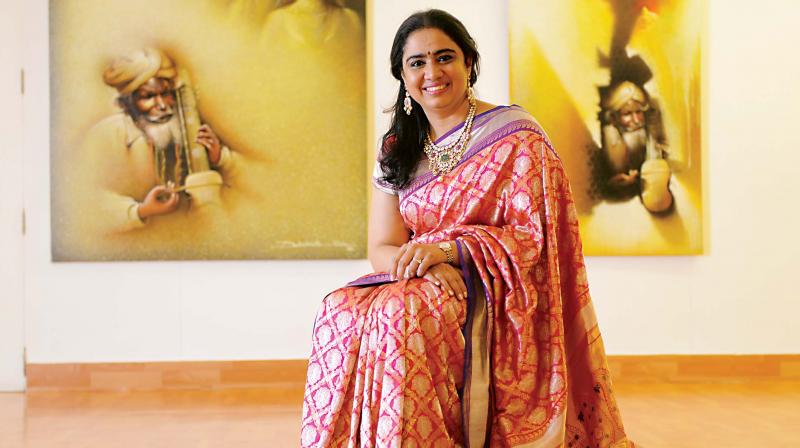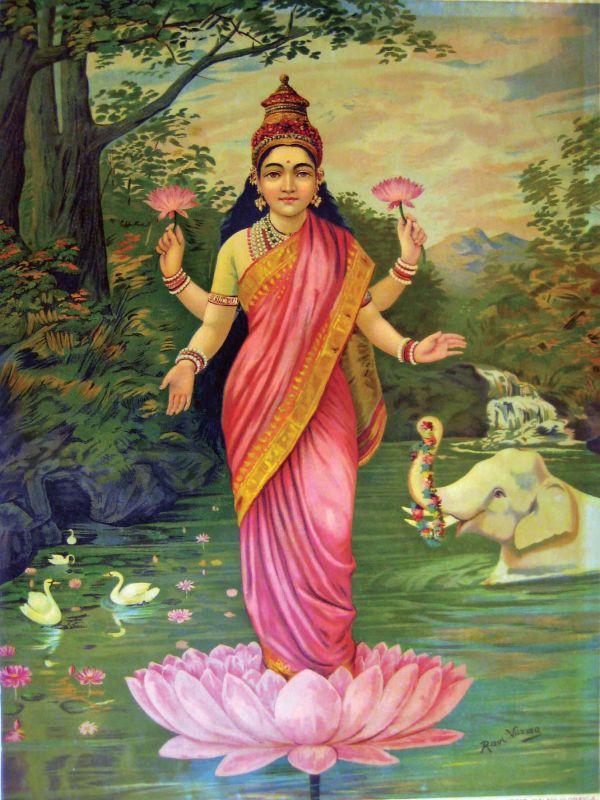The Ravi Varma legacy and the Gitanjali Maini connect
Apart from being one of India's greatest painters, Raja Ravi Varma dramatically changed the way Indians saw their own culture.

Raja Ravi Varma, the legendary painter, accomplished more than most people do in a lifetime, but his death in 1906 left one dream unfulfilled - a home in Bengaluru. He even singled out a plot of land on Link Road, Malleswaram, where he hoped to move after he retired. "A lot of people wanted to settle here," said Gitanjali Maini, founder, Gallery G and Managing Trustee of the Raja Ravi Varma Heritage Foundation. "He never did get the chance to live there, although he had made his wishes known."
In 1949, nearly half a century after his death, the creation of Trivandrum-Cochin breathed new life into the family dream. By the 1950s, Sethu Lakshmi Bayi, the granddaughter of Raja Ravi Varma, was contemplating her move to Bengaluru, which her daughter, Lalithamba Bayi had done several years before. Sethu Lakshmi Bayi's shift was hasted in 1957, when the servants at Satelmond Palace formed a Union, with matters reaching a head one year later. Sethu Lakshmi Bayi spent the last 25 years of her life in the city and the legacy of Raja Ravi Varma found a new home.
"It made a lot of sense, therefore, for the Foundation to be in Bengaluru," said Maini, whose gallery hosted Rukmini Varma, the great-great-granddaughter of the legend, after she emerged from her 30-year-retreat into solitude. "The family lives here and the style of painting for which he is known is practiced widely in the state," she explained. Like Maini, Ganesh Krishnaswamy, a close friend of the Varma family, felt a heritage foundation would provide the missing link. The idea first came to fruition before Rukmini Varma, the last bearer of the family legacy, made her entry back into society. "We had our first meetings in my house," said Varma, in an interview with Deccan Chronicle. "I never went out, of course, so they came to me."
The Foundation was created to celebrate and preserve the grand Varma legacy, including his paintings, drawings and lithographs, to celebrate a legacy that continues to influence Indian life. “Varma was the first gentleman artist,” said Manu Pillai, historian and author of The Ivory Throne: Chronicles of the House of Travancore. He was the first artist to sign a painting and the first to hold an exhibition of his works (he did so in Baroda). “He influenced our lives in many ways, from how we perceived our deities to how women drape their sarees,” Maini added. “That’s why the need for a foundation to preserve his legacy was so pressing.”
On April 29, his 170th birth anniversary, the foundation will screen Beyond the Arch, a documentary film that took them back to his birthplace in Kilimanoor, where they worked with the Palace
Trust to uncover his earliest days. "That took us from Kilimanoor to Baroda, where he had his first show and to Mysore as well, to the see the collection there. Looking back, I can hardly believe the sort of progress we have made over the last 20 months."
 A Raja Ravi Varma lithograph. The Goddess Saraswati’s saree is draped in the style in which it is worn today
A Raja Ravi Varma lithograph. The Goddess Saraswati’s saree is draped in the style in which it is worn today
Ganesh Shivaswamy, an honorary member of the foundation, allowed Gallery G access to his collection of lithographs - perhaps the largest in the country. "Varma was famous for his lithographs, they set him apart," said Maini. The lithographs, drawn on stone, were printed en-masse, bringing art into the daily life of the average Indian.
"Varma received criticism for this, making art for mass consumption lessens its value," said Pillai, historian and author of The Ivory Throne : Chronicles of the House of Travancore. "He was also criticised for his colonial style. These criticisms do exist, but he made art respectable, shifting the focus from the patron to the painter.

